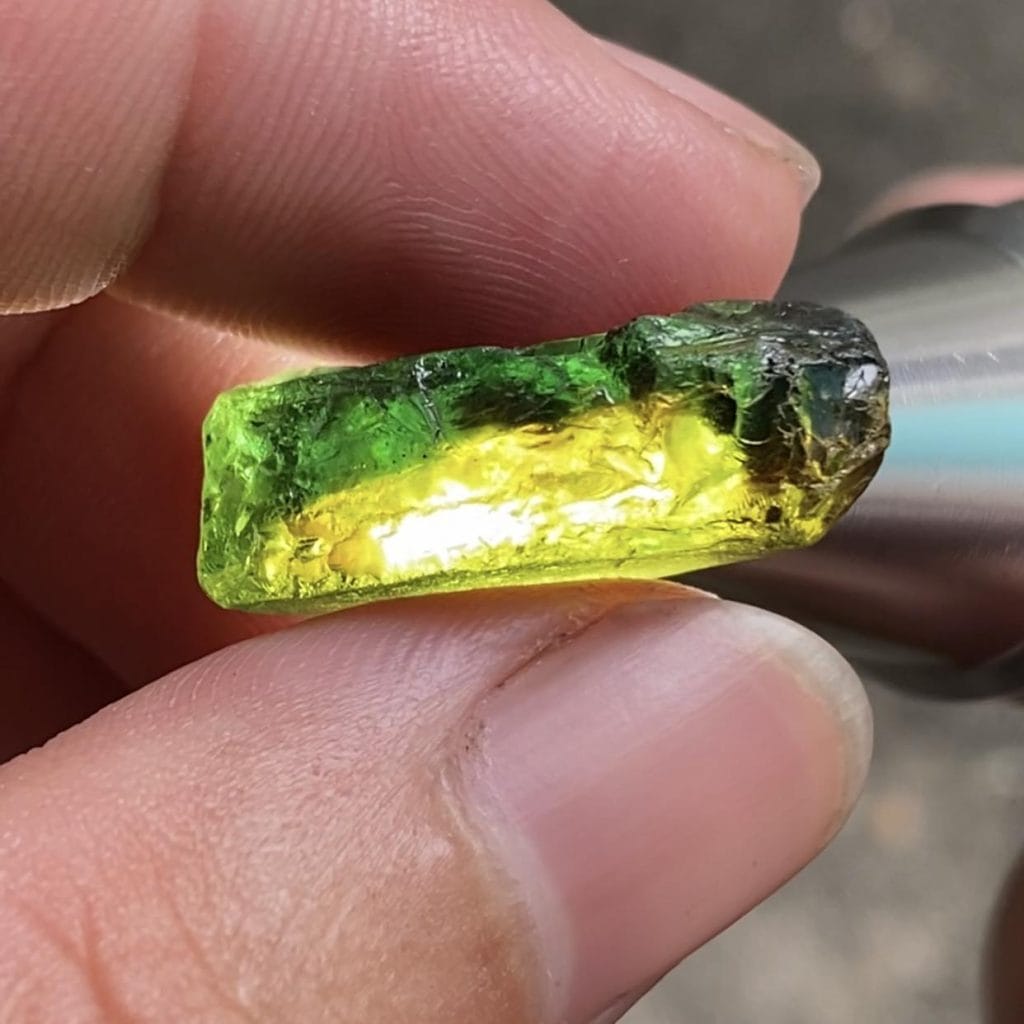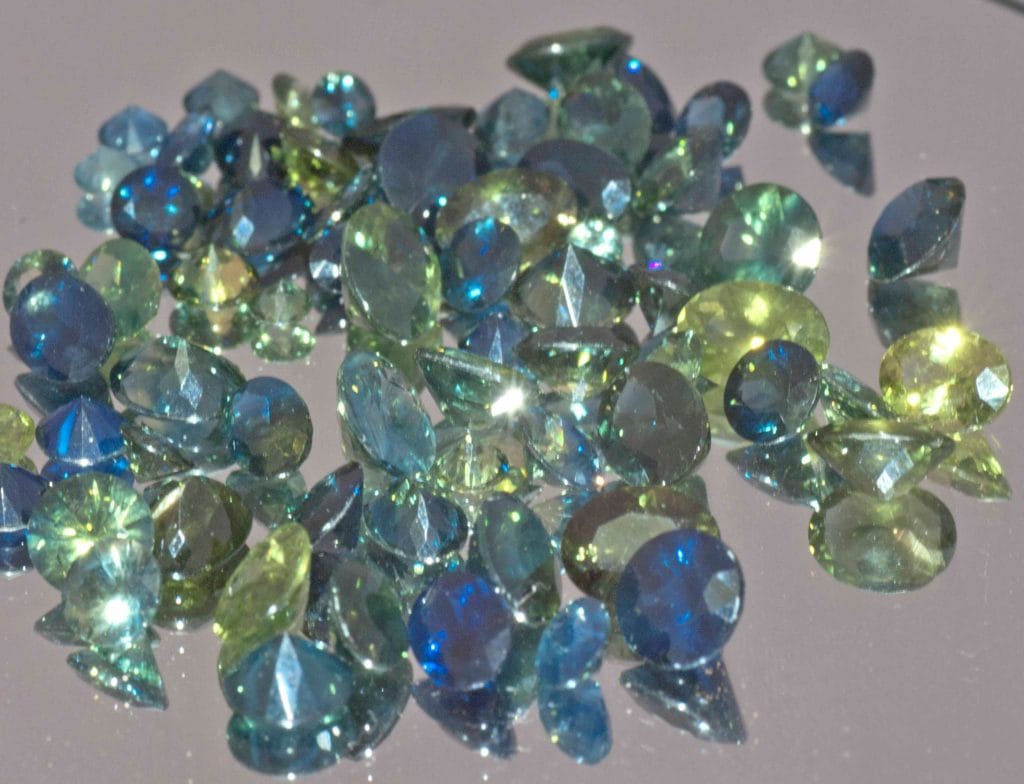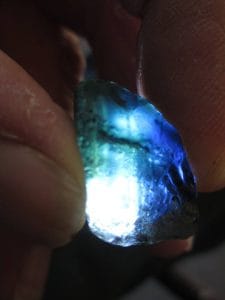Sapphire Australia on its History and Industry

The history of Sapphire Australia is a dazzling narrative of geology, chance, and global commerce. From being discarded by gold rush miners to defining the international gemstone market, the story of this unique resource is as rich and complex as the multi-hued stones themselves. Australia is globally recognized not just for the volume of its production but for the distinct characteristics and ethical standards that define the modern Sapphire Australia brand.
💎 Early Days: The Accidental Discovery and the Alluvial Origin (1850s – 1890s)
The birth of the Sapphire Australia industry was serendipitous, overshadowed entirely by the pursuit of gold. When the gold rushes swept New South Wales in the mid-19th century, prospectors along rivers like the Cudgegong and the Macquarie frequently found small, heavy, blue crystals mixed with their gold dust. These early miners, focused solely on the precious yellow metal, often unknowingly tossed the first specimens of Sapphire Australia back into the streams. They were primarily looking for the density of gold, not the hardness of corundum.
The true commercial awakening of Sapphire Australia began in the Central Queensland Gemfields, near modern-day Anakie, following a discovery in 1875. This vast area quickly became the country’s most significant source. Early operations were rudimentary, with individual miners sinking deep, dangerous shafts to retrieve the sapphire-bearing alluvial gravel, known as ‘wash.’ This difficult, hands-on labor characterized the initial production of Sapphire Australia.

The Geological Context: Why Australia is a Sapphire Haven
To understand the sheer volume of Sapphire Australia requires a look at its unique geological past. The vast majority of Australian sapphires are found in alluvial deposits, meaning they have been eroded from their primary source rock and concentrated in ancient riverbeds. The original source rocks are typically alkaline basaltic volcanic flows that occurred millions of years ago, primarily during the Cenozoic Era. As the magma rose rapidly from the Earth’s mantle, it carried fragments of rock—including the sapphire crystals that formed deep underground—to the surface.
Over eons, these volcanic fields eroded, releasing the exceptionally hard and durable sapphire crystals. Water acted as a natural concentrator, washing away lighter materials and settling the heavy sapphires in layers of gravel. This is why mining in both Queensland and New South Wales focuses on excavating these specific sapphire-bearing ‘wash’ layers. This geological process not only explains the location of the deposits but also the characteristic iron-rich chemistry of the stones, which gives them their signature deep colours.
🌍 Global Reach: Supplying the World and the Early Export Trade (1890s – 1950s)

Despite its remote origins, Sapphire Australia quickly found a prestigious international market. In the late 19th and early 20th centuries, Russian and German buyers recognized the quality of the deep, inky-blue Australian gems. These stones, particularly the darker hues, were favored by the Imperial Court of Tsarist Russia, placing Sapphire Australia pieces in some of Europe’s most opulent jewels. German firms like Hermann Hagemann & Co. played a pivotal role, establishing critical trade links that bypassed local infrastructure deficiencies.
The Central Queensland fields, in particular, attracted entrepreneurial migrants and buyers who shipped rough stones to cutting centres in Europe, most notably Idar-Oberstein in Germany, which specialized in corundum cutting and trading. This early export market proved the resilience and commercial viability of Sapphire Australia.
However, this flourishing trade came to an abrupt end with World War I and the subsequent Russian Revolution of 1917. The collapse of the primary European market plunged the Sapphire Australia industry into a deep slump that lasted through the Great Depression of the 1930s. Operations were largely abandoned, and the gemfields became virtual ghost towns. Only the most dedicated fossickers remained, scratching a subsistence living while waiting for technology and new global markets to revive the production of Sapphire Australia.
⚙️ The Boom Years: Mechanization, Thai Partnerships, and Global Dominance (1960s – 1980s)
The most transformative period for Sapphire Australia began in the 1960s with the introduction of mechanical mining. The limitations of the old ‘rat-hole’ methods were overcome by modern earth-moving equipment, which made the vast, shallower alluvial deposits in the New England Gemfields of New South Wales (around Inverell and Glen Innes) highly profitable. The key to this success was the adoption of large-scale trommel and jig plants—machines designed to efficiently wash, separate, and concentrate the heavy gems from enormous quantities of gravel.
The true “Golden Age” was driven by a crucial partnership with Thai gem traders, centered in Chanthaburi. These experts specialized in sophisticated heat treatment, a technique vital for improving the marketability of Sapphire Australia stones. The high iron content in the Australian blue sapphires often made them too dark, sometimes appearing almost black (‘inkies’) in their natural state. Heat treatment at temperatures exceeding could diffuse the iron and titanium inclusions, resulting in a lighter, brighter blue, a colour more favoured by Western consumers.
This symbiotic relationship propelled Australia to global dominance; at its peak in the 1980s, Sapphire Australia supplied an estimated 70-90% of the world’s commercial-grade sapphires. The sheer volume of blue, yellow, and green stones flowing out of the Australian fields fundamentally changed the accessible gemstone market, making sapphires affordable for a much wider consumer base globally. This era cemented Australia’s reputation as the world’s most consistent source of corundum, even if much of the high-value cutting and treatment was conducted overseas.

📉 Transition and Modern Identity: Unique Aesthetics and Ethical Sourcing
The dominance of Sapphire Australia waned in the 1990s due to the rise of major competing sources, particularly in Madagascar and Africa, coupled with a global market shift towards lighter blue shades. However, this transition led to a re-evaluation of the unique qualities of the Australian stones, which now define the modern industry.
Today, Sapphire Australia is defined less by sheer volume and more by its unique geology and stringent ethical standards.
Unique Geological Signatures: Parti and Teal
The country’s volcanic history gave rise to stones with distinct, desirable characteristics that are now in high demand:
- Parti Sapphires: These are perhaps the most celebrated type of Sapphire Australia. They naturally display two or more colors—typically blue, green, and yellow—within a single crystal. This color-zoning is a natural phenomenon caused by slight variations in trace elements during the crystal’s formation. Unlike stones prized for single, uniform colour, the natural heterogeneity of the Parti Sapphire is highly valued by modern designers and consumers seeking natural, one-of-a-kind gemstones.
- Teal Sapphires: Gaining massive popularity, these stones feature a mesmerizing, naturally occurring blue-green or ‘peacock’ hue. Their distinctive colour is a direct result of the iron content and their specific formation conditions, setting them apart from sapphires found elsewhere.
The Ethical Advantage of Sapphire Australia
In the 21st century, the greatest marketing advantage for Sapphire Australia is its commitment to ethical and sustainable sourcing. The Australian mining sector is characterized by:
- Strict Environmental Regulation: Miners are legally required by state governments (such as the NSW Department of Mining and the Queensland Department of Natural Resources) to have detailed rehabilitation plans. This means topsoil must be stored and replaced, pits must be backfilled, and the land must be returned to its original or an improved agricultural state after mining ceases.
- Worker Safety and Labor Laws: Operations adhere to strict Australian workplace safety and labor laws, eliminating the issues of unsafe working conditions and child labor that plague some unregulated gemstone sources worldwide.
- Mine-to-Market Traceability: The highly regulated, licensed claim system provides an unparalleled level of provenance. Every rough stone can generally be tracked back to a licensed claim in a specific Australian gemfield, offering a crucial guarantee of origin that is highly valued by consumers demanding transparency.
This ethical framework distinguishes Sapphire Australia as a premium, responsible choice in the global gemstone market.
🧑🤝🧑 Community and Legacy: The Fossicker’s Dream
The rich mining history has created a unique social and cultural landscape. Towns like Rubyvale and Sapphire in Queensland and Inverell in NSW continue to thrive, fuelled by both professional mining and the enduring spirit of sapphire fossicking. This tradition, which allows tourists and hobbyists to search for gems on designated land or through commercial gravel, keeps the excitement of discovery alive.
Despite two centuries of extraction, the basaltic volcanic regions of Eastern Australia are believed to still hold substantial sapphire resources. Continued exploration in areas like Lava Plains and Barrington Tops suggests the story of Sapphire Australia is far from over.
The Australian sapphire today is a perfect confluence of ancient geology and modern ethical commitment. It represents not just a beautiful jewel, but a piece of a truly epic historical journey—responsibly mined, distinctly coloured, and carrying the vibrant legacy of the pioneers who first unearthed this blue gold.
